PL Male Elbow — One-Touch Pneumatic Elbow Fitting for Fast, Tool-Free Tubing Connections
The PL Male Elbow is a one-touch pneumatic fitting engineered for rapid, reliable 90° connections between tubing and threaded ports in compressed air systems. Designed for tool-free connection and disconnection, the PL Male Elbow reduces installation time, simplifies maintenance, and improves system modularity in automation, packaging, robotics and general industrial compressed air installations. The product family supports a wide range of tubing diameters and thread types, provides vacuum capability to −29.5 in Hg, and is rated for compressed air service up to 0–150 psi (0–9.9 kgf/cm², 0–990 kPa). This article provides a comprehensive technical overview, specifications, materials, use cases, comparisons, maintenance guidance and practical design/installation advice for engineers, maintenance technicians and procurement specialists.
Introduction
Pneumatic systems rely on reliable, leak-free connections between tubing and components. Traditional threaded fittings or barbed connectors can be slow to install and difficult to service. The PL Male Elbow addresses these issues by offering a push-to-connect (one-touch) interface on the tube side with a male threaded interface on the other — combining speed, compact routing and secure threaded mounting in one compact, 90° package. The product’s design intent is to allow technicians to connect or disconnect tubing in 1–2 seconds without tools while providing a robust threaded interface for fixed mounting to valves, manifolds and actuators.
Technical Overview
The PL Male Elbow is a 90° push-to-connect fitting with a male threaded end. The fitting is composed of a tubular push-in port for tubing and a male-threaded spigot that mates with machine ports or pipe threads. Tube insertion is accomplished by pushing the tubing into the push-fitting until it seats against an internal stop. The tube is retained by a collet with metal teeth and an elastomeric O-ring forms the pressure seal. Disconnection is performed by depressing the release sleeve (also called the collet sleeve) and pulling the tubing out — no wrenches or disassembly required.
Key mechanical attributes:
- Push-to-connect mechanism: Fast tool-free insertion and release.
- 90° body geometry: Allows compact routing and strain-relieved corners for tubing runs.
- Male threaded interface: Available in a variety of thread standards and sizes to suit common valve and manifold ports.
- Vacuum tolerance: Supports vacuum down to approximately −29.5 in Hg (≈−750 mm Hg, 10 Torr), enabling return-line or vacuum pick-and-place applications.
- Operating pressures and temperatures: Rated 0–150 psi (0–9.9 kgf/cm², 0–990 kPa) and −0–60 °C (32–140 °F) for standard materials.
How the One-Touch Mechanism Works
Internally the push-fit assembly comprises four primary elements:
- Collet (retainer): A ring—often brass or plated metal—with fingers/teeth that grip the outer diameter of the tubing. A polymer sleeve enables a smooth external surface and manual release.
- O-ring seal: A nitrile (Buna-N) or optional FKM elastomeric ring positioned around the tube just inside the body to provide the pressure-tight seal.
- Internal stop: A seat that ensures consistent insertion depth and stabilizes the tube against axial loading.
- Body and threaded spigot: Typically brass or nickel-plated brass for mechanical resilience and corrosion resistance; some variants can be stainless steel for corrosive environments.
When tubing is pushed in, the tubing slides past the collet and compresses the O-ring to form the seal. The collet fingers spring back and engage the tube surface so that axial pull-out force is resisted. Pressing the sleeve retracts the collet fingers and releases the tube.
Specifications and Dimensions
The PL Male Elbow family supports a range of metric and inch tubing outside diameters and a variety of male thread types. The table below lists representative models, tube sizes, thread types and key dimensional values. These are typical product-class values — consult the specific manufacturer’s datasheet for exact dimensions and tolerances for the part number you are ordering.
| Model Code | Tubing OD (φD) | Thread Type | Thread Size | Overall Length (L) | Body Width / Hex (W) | Thread Length (T) | Approx. Weight | Max Operating Pressure |
|---|---|---|---|---|---|---|---|---|
| PL 04-M5 | 4 mm | Metric (fine) | M5 x 0.8 | 22 mm | 8 mm | 6 mm | 4 g | 0–150 psi (0–990 kPa) |
| PL 06-M5 | 6 mm | Metric | M5 x 0.8 | 26 mm | 9 mm | 6 mm | 6 g | 0–150 psi |
| PL 08-1/8 | 8 mm | BSPP / G (typ.) | 1/8″ | 30 mm | 11 mm | 8 mm | 10 g | 0–150 psi |
| PL 10-1/4 | 10 mm | NPT / BSPT | 1/4″ | 34 mm | 13 mm | 9 mm | 14 g | 0–150 psi |
| PL 12-3/8 | 12 mm | Inch pipe | 3/8″ | 38 mm | 14 mm | 10 mm | 18 g | 0–150 psi |
| PL 1/4-N1 | 1/4″ (6 mm OD typical) | NPT (tapered) | 1/4″ NPT | 34 mm | 13 mm | 9 mm | 14 g | 0–150 psi |
Notes: “Overall Length (L)” is measured from the back of the threaded spigot to the outer face of the push-fit body; “Body Width / Hex (W)” indicates the external nut/hex width used for tightening where applicable; thread length (T) is the threaded engagement length. Actual dimensions will vary by manufacturer; this table should be used for planning and compatibility checks only.
Materials and Build Quality
The PL Male Elbow is engineered with commonly used materials chosen to balance durability, cost, weight and chemical compatibility. Typical construction details and material choices include:
- Body material: Nickel-plated brass is the most common material used for the threaded spigot and main body due to its excellent mechanical strength, corrosion resistance and machinability. In corrosive environments stainless steel (316) variants may be available.
- Collet/retainer: Brass or stainless steel collet with stainless-steel teeth is used to provide firm gripping of the tubing. Some low-cost variants use plated brass or polymer collets—metal collets are preferred for higher cycle life and increased pull-out strength.
- Release sleeve: Polyacetal (POM) or polybutylene terephthalate (PBT) polymer for smooth feel, dimensional stability and resistance to wear. The PC variant features hexagonal inner and outer surfaces integrated into the polymer sleeve to enable wrench tightening in confined spaces.
- Seals: Standard O-rings are usually nitrile rubber (Buna-N) offering a good balance of air sealing, abrasion resistance and cost. For higher temperature or chemical exposure, FKM (Viton) or EPDM seals may be offered as options.
- Thread seal coating: The threaded portion is supplied with a factory-applied sealant (commonly a cured PTFE-based paste or anaerobic coating) to simplify assembly and reduce the need for additional tape or compound. This coating reduces assembly time and ensures repeatable sealing torque characteristics.
Build quality considerations:
- Precision machining or injection molding tolerances ensure consistent insertion depths and reliable O-ring compression across production lots.
- Nickel plating or passivation on metal surfaces extends corrosion resistance in industrial environments with humidity or airborne contaminants.
- Material selection for the seal and collet directly affects cycle life, chemical compatibility and temperature range; always select seal materials according to the media and operating temperature of your application.
Key Features
- One-touch push-in tube connection: Connect or disconnect tubing in 1–2 seconds without tools, reducing downtime on installations and repairs.
- Compact 90° geometry: Enables space-saving routing in control panels, machine frames and tight mounting areas.
- Wide range of tube sizes and thread options: Supports common metric and inch tubing (4–12 mm typical, plus 1/8″, 1/4″, 3/8″ options) and multiple thread standards (M-type metric, BSPP/G, BSPT, NPT).
- PC variant with hexagonal inner and outer surfaces: Facilitates use of a wrench on both the internal hex and external flats in confined spaces during assembly.
- Pre-applied thread seal coating: Simplifies assembly and reduces risk of thread leaks without overuse of Teflon tape or messy sealants.
- Vacuum capable: Tolerates vacuum down to approximately −29.5 in Hg, enabling use in vacuum return lines and pick-and-place tools with appropriate tubing and seals.
- High-pressure rating for pneumatic systems: Rated 0–150 psi, which covers the majority of industrial compressed air systems.
- Tool-less maintenance: Serviceability and tube replacement are straightforward and fast, improving uptime.
Use Cases and Applications
The PL Male Elbow is suited for any application where quick, reliable elbow connections from tubing to threaded ports are required. Typical industrial applications include:
- Factory automation and robotics: Connection of pneumatic actuator lines, gripper vacuum lines (when configured for vacuum), sensors and valve manifolds where compact routing reduces hose strain and interference.
- Packaging machinery: Distribution and routing of air to cylinders, air jets and conveyors; fast maintenance reduces changeover time in high-mix production environments.
- Pick-and-place vacuum systems: Vacuum-capable variants are useful in short-run vacuum lines for pick heads where 90° routing reduces footprint.
- Control panels and logic manifolds: Neat, compact routing behind panels with push-in fittings for quick assembly and serviceability.
- Air tool distribution and maintenance rigs: Portable fixtures and maintenance carts benefit from tool-free tube connection points.
- Prototyping and R&D labs: Rapid reconfiguration of pneumatic circuits speeds up experiment setup and iteration.
- OEM equipment: Embedded into assemblies where pre-installed tubes are connected final-assembly-time to machine ports.
Comparison with Alternative Fittings
To help engineers select the right connector for their application, the table below contrasts the PL Male Elbow against common alternatives: a standard metal threaded elbow with ferrule, a swivel push-to-connect elbow, and a barbed elbow with hose clamp.
| Feature | PL Male Elbow (One-Touch) | Standard 90° Threaded Elbow (Ferrule/Compression) | Swivel Push-to-Connect Elbow | Barbed Elbow (Hose + Clamp) |
|---|---|---|---|---|
| Tool-free tube connection | Yes (push-in) | No (requires wrenches, ferrule seating) | Yes | No (requires hose and clamp) |
| Installation speed | Very fast | Moderate | Fast | Slow (cut, insert, clamp) |
| Vibration resistance | Good (metal collet option) | Excellent (mechanical ferrule bite) | Good (swivel reduces stress) | Poor to fair (hose can slip if clamp loosened) |
| Pressure rating | 0–150 psi (typ.) | Up to 300+ psi depending on ferrule | Up to 150–200 psi | Dependent on hose; typically low-medium |
| Vacuum capability | Yes (to ~−29.5 in Hg) | Yes | Yes | Limited (depends on hose) |
| Serviceability | Excellent (quick connect/disconnect) | Poor to moderate (ferrules may require replacement) | Excellent | Moderate |
| Cost | Moderate | Moderate–High | Higher (due to swivel mechanism) | Low |
Summary of comparison: The PL Male Elbow offers the fastest tool-free connection and is ideal where regular maintenance or reconfiguration is expected. If maximum pressure/strength or absolute vibration locking is required, a compression/ferrule elbow may be preferred. Swivel push-to-connect fittings are a close functional analog when rotational freedom is required. Barbed elbows are inexpensive but less serviceable and typically should be used only in suitable low-pressure or disposable applications.
Benefits and Limitations
Benefits
- Speed and convenience: Push-in tube insertion and quick release dramatically reduce assembly and maintenance times.
- Space efficiency: The 90° orientation reduces required clearance for tubing runs and helps avoid sharp bends in tubing which can cause flow restriction or premature fatigue.
- Pre-applied sealant: Seal-coated threads simplify installation and improve initial leak-tightness without overuse of thread tape.
- Versatility: Wide range of tube sizes and thread combinations supports many pneumatic system architectures.
- Vacuum capability: Can be used in vacuum service down to approximately −29.5 in Hg, expanding application flexibility.
Limitations
- Intended for compressed air and compatible media: Standard elastomers and materials are optimized for air; exposure to oils, fuels or aggressive chemicals may require special seal materials (FKM, EPDM) or alternate body materials (stainless steel).
- Temperature limits: Typical operating range of 0–60 °C (32–140 °F) restricts use in high-temperature environments unless higher-temperature O-rings and polymers are specified.
- Pressure ceiling: Rated up to 150 psi for standard variants; not intended for high-pressure hydraulic service.
- Tubing compatibility: Push-fits rely on tubing hardness and OD tolerances. Some soft or non-standard hoses (rubber, braided, certain thermoplastics) may not provide adequate retention or sealing.
- Potential for O-ring wear: Repeated frequent connect/disconnect cycles can accelerate O-ring wear compared to static threaded joints; periodic inspection and replacement may be required in high-cycle environments.
Installation Guide and Best Practices
Proper installation is critical to achieving leak-free, durable performance from PL Male Elbow fittings. Follow these best practices:
- Confirm compatibility: Verify tubing OD, wall thickness and material are compatible with the fitting. Typical compatible tubing includes polyurethane (PU), nylon (PA), and polyethylene designed for push-fit connectors. Check manufacturer recommendations for tubing hardness (Shore) and tolerance.
- Cut tubing square: Use a dedicated tubing cutter to produce a clean, square cut. Avoid scissors or other cutters that may leave burrs or deform the tube end.
- Deburr and inspect: Ensure the cut tube end is free of burrs, chips, or debris. Inserted debris can damage the O-ring and impede sealing.
- Insert fully: Push the tube straight into the fitting until it reaches the internal stop. The typical tactile click or resistance indicates full insertion. Mark insertion depth for repeatability in production.
- Tighten threaded connection: If the threads are pre-coated with sealant (as supplied), tighten until snug and then apply an additional 1/8 to 1/4 turn with a wrench on the hex flats. Avoid excessive torque which can distort threads or crack polymer components. For metric threads (M5) finger-tight plus partial turn with a wrench on the dedicated hex is usually sufficient. Where manufacturer torque specs are available, use those values.
- Leak test: After assembly, pressurize the system and perform a leak check. Use a soap-and-water spray, bubble solution, or an electronic leak detector. Inspect both the tubing push-in and the threaded joint carefully.
- Label and document: For production or maintenance environments, label tubing lines and document part codes to ensure correct replacements during service.
Torque guidance note: Because specific torque values depend on thread type, material and size, the general guidance above (snug + 1/8–1/4 turn) is conservative. For critical applications, refer to the manufacturer torque chart for each thread size and material combination. Over-torquing threads (especially small metric threads) will cause thread stripping, while under-torquing increases leak risk.
Troubleshooting and Maintenance Guide
Periodic inspection and maintenance will ensure long-life and leak-free performance from PL Male Elbow fittings. Below are common failure modes and recommended corrective actions.
Common Issues and Remedies
- Leak at the tube insertion point
- Cause: Improper insertion depth, cut tubing with burrs, damaged O-ring or wrong tubing material/OD.
- Remedy: Remove tubing and inspect O-ring and internal surfaces. Cut a fresh square end on the tube, reinsert fully. Replace O-ring if damaged. Ensure tubing OD and wall thickness meet the fitting specification.
- Leak at the threaded joint
- Cause: Inadequate thread engagement, contaminated or cross-threaded seal, removed pre-applied sealant.
- Remedy: Unthread and inspect threads, clean mating surfaces, reseal (if allowed) with PTFE tape wrapped in the correct direction or use an appropriate pipe sealant. Reinstall to recommended engagement and torque.
- Difficulty disconnecting tubing
- Cause: Dirt or swarf in the collet, deformed tubing, or a seized collet due to corrosion.
- Remedy: Depress the release sleeve fully while pulling the tubing straight. If the collet is sticky, depress several times with a small lubricant compatible with the seal (silicone-based) and cycle a few times. If corroded, replace the fitting.
- Collet teeth slipping (pull-out)
- Cause: Tube surface too soft, incorrect tube OD, or collet teeth damaged.
- Remedy: Verify tube OD and hardness. Replace with recommended tubing (e.g., polyurethane or nylon). Replace the fitting if collet teeth are damaged.
Routine Maintenance
- Inspect fittings periodically for external damage, corrosion or thread loosening.
- Replace O-rings and release sleeves on schedule in high-cycle applications (every few thousand cycles — refer to manufacturer cycle-life data if available).
- Keep spare fittings and O-ring kits on site for quick replacement during planned maintenance.
- Use silicone-compatible lubricants for polymer parts if lubrication is required — avoid petroleum-based lubricants that may damage seals.
Selection Checklist for Engineers and Purchasers
To choose the correct PL Male Elbow for a given installation, consider the following checklist:
- Tubing compatibility: Confirm tube OD, wall thickness and material (polyurethane, nylon, etc.).
- Thread type and seal standard: Identify the mating port thread (M5, G 1/8, 1/4″ NPT, etc.) and whether you need tapered or parallel threads.
- Operating pressure and temperature: Verify max system pressure is within 0–150 psi and temperature within the material limits; request alternate seal materials for higher temperatures.
- Environmental conditions: Consider corrosive atmospheres, water exposure, or oil presence and select nickel-plated brass or stainless steel accordingly.
- Cycle frequency: High-frequency connect/disconnect will require higher cycle-life materials or replacement intervals.
- Vacuum requirements: Confirm the vacuum capability for your use case and ensure the selected seal material supports vacuum service.
- Space constraints: Choose the PC variant with hexagonal inner/outer surfaces if wrench access is limited during assembly.
Design Considerations and Integration Tips
When integrating PL Male Elbow fittings into a pneumatic system, the following engineering considerations will improve reliability and performance:
- Avoid sharp bends beyond the elbow: Use elbows and 90° fittings at routing points to avoid kinking tubing. A minimum bend radius for the tubing type should be respected to prevent flow restrictions and tube fatigue.
- Support long tubing runs: Use clips or straps to prevent vibration and tube sway. Excessive vibration can accelerate collet wear.
- Use in-line filters and drip legs: Protect push-fits from particulate and liquid ingress by upstream filtration and condensation traps, especially in compressed air lines subject to moisture.
- Plan for service access: Position fittings where technicians can easily depress the release sleeve and remove tubing without disassembling surrounding hardware.
- Consider downstream pneumatic damping: Sudden releases or surges in pressure can accelerate wear — soft-start or flow-control valves may prolong fitting life in certain dynamic systems.
Regulatory and Safety Considerations
Although the PL Male Elbow is intended for compressed air applications, safety and regulatory aspects should be considered:
- Do not use fittings intended for air service with flammable gases, oxygen, or with hazardous fluids unless explicitly rated for such media; elastomer compatibility and cleaning are critical for oxygen service.
- Follow relevant machine safety standards (e.g., ISO 4414 for pneumatic fluid power) when designing pneumatic circuits.
- Pressure relief and overpressure protection must be included in systems that could exceed the fitting’s rated pressure.
- Use appropriate lockout/tagout and depressurization procedures during maintenance to avoid accidental tube ejection under pressure.
Ordering Guide and Part Numbering
PL Male Elbow part numbers follow a compact code: PL φD–T where φD identifies the tubing outside diameter and T identifies the thread type/size. Example codes:
- PL 04-M5 — 4 mm tube × M5 male thread
- PL 08-1/8 — 8 mm tube × 1/8″ thread (BSPP or depending on chart)
- PL 1/4-N1 — 1/4″ tube × 1/4″ NPT male thread
When ordering specify:
- Exact part code including the variant (PC variant if hex surfaces required)
- Desired body material (nickel-plated brass or stainless steel)
- Seal material (Buna-N standard, FKM/Viton or EPDM if required)
- Operating environment notes (e.g., exposure to salt spray, oil or chemicals)
- Quantity and any special packaging (kits, bulk trays, etc.)
Practical Example: Retrofitting a Pneumatic Gripper
Consider a robot gripper that requires a 90° feed line connection from a compact manifold port located close to the gripper body. The design constraints require a compact connector, tool-free disconnect for fast maintenance, and vacuum capability for the vacuum cup actuators when the system runs in pick mode.
Solution selection and steps:
- Select PL 08-1/8 with 8 mm tubing to match the existing flexible polyurethane lines.
- Confirm the manifold port thread is 1/8″ BSPP (G) and select the variant with matching thread standard.
- Use the PC variant if assembly access is limited — its hex inner/outer surfaces allow secure wrench tightening during final assembly.
- During installation, cut tubing with accurate cutter, push into fitting until seat, and torque the threaded connection per the manufacturer’s guidance (hand-tight + 1/8 turn with wrench).
- Perform pressure/vacuum leak test and run the robot through multiple cycles to validate retention and sealing under dynamic motion.
Conclusion
The PL Male Elbow is a versatile, time-saving one-touch pneumatic fitting that simplifies assembly and maintenance in compressed air systems. Its push-to-connect tube interface paired with a male threaded spigot provides both the speed of tool-free tubing connections and the mechanical integrity of threaded mounting. With a compact 90° geometry, pre-applied thread sealing, and availability in a wide range of tube diameters and thread standards — including a PC variant optimized for assembly in confined spaces — the PL Male Elbow is a robust choice for automation, OEM assemblies, and general industrial pneumatic applications.
Engineers should specify the correct material and seal options for their environment, ensure tubing compatibility, and follow recommended installation and maintenance practices to achieve reliable, long-term performance. When correctly selected and installed, the PL Male Elbow reduces assembly time, improves serviceability, and helps maintain leak-free pneumatic networks across a broad set of industrial applications.
If you need a tailored selection sheet, CAD models, or a compatibility matrix for your specific tubing and manifold thread standards, provide your tubing ODs, thread types and expected operating environment and we can produce a recommended parts list and installation checklist for your procurement and engineering teams.

 Tiếng Việt
Tiếng Việt
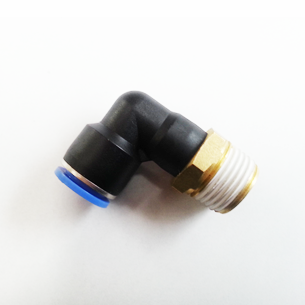
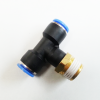
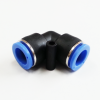
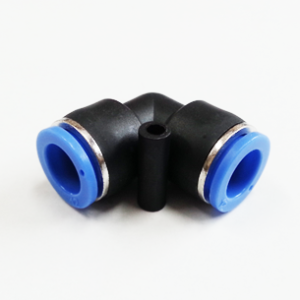
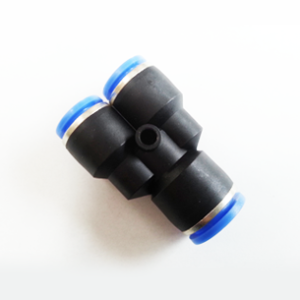
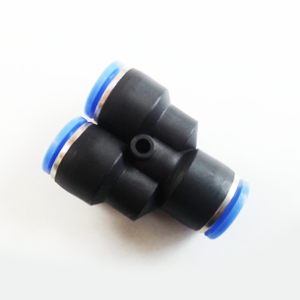
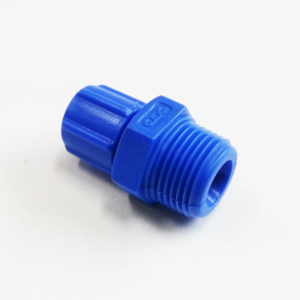
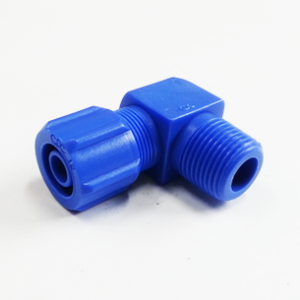

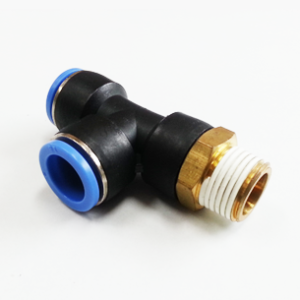
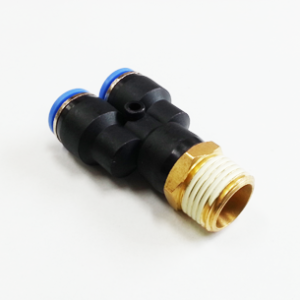
Reviews
There are no reviews yet.